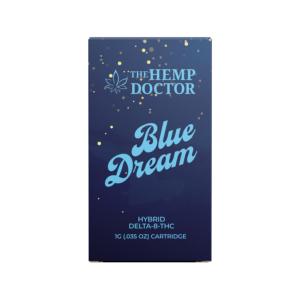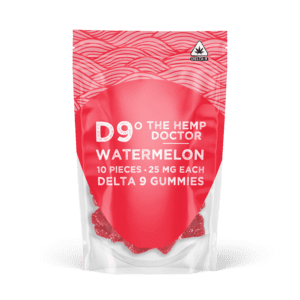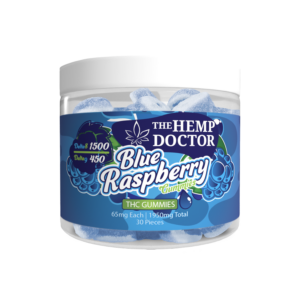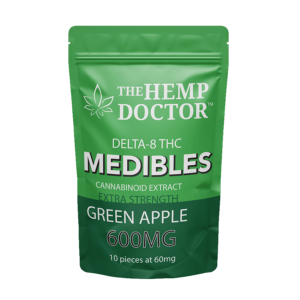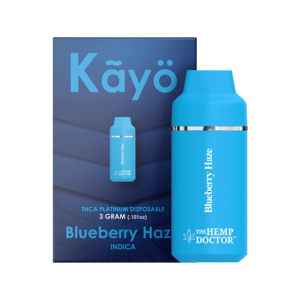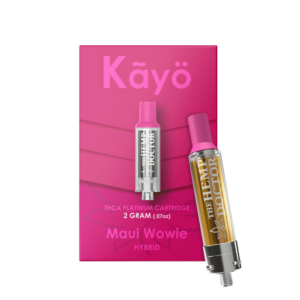The cannabis industry has long been a battleground — not just between prohibitionists and advocates, but within sects of the plant itself. A new front has emerged in recent years – pitting two sides of the same plant against each other: marijuana (or “pot”) and hemp. The “pot vs. hemp” showdown is more than just a botanical distinction: it’s a high-stakes conflict of economic interests, legal loopholes, and ever-shifting consumer preferences.
At the heart of this rivalry is a question: Should hemp-derived cannabinoids, like THCA, exist in the same market as state-licensed marijuana products? The answer is far from simple. It depends on whom you ask – from licensed marijuana producers and hemp farmers to policymakers and everyday consumers. Each has a stake in the outcome, and their perspectives shape the increasingly contentious battle over the future of cannabis commerce in the U.S.
A Tale of Two Industries
At a scientific level, there’s little difference between hemp and marijuana. Both are cannabis of varying Delta-9-tetrahydrocannabinol (THC) levels, with legality as the only real central gap.
The 2018 Farm Bill, now called the Agriculture Improvement Act of 2018, defines hemp as cannabis containing less than 0.3% Delta-9 THC by dry weight, effectively legalizing the cultivation and sale of hemp nationwide. Marijuana, on the other hand, remains federally prohibited despite state-by-state legalization efforts.
This legal divide has created two vastly different regulatory and economic landscapes. The marijuana industry operates within a strict and heavily taxed framework, whereas state governments regulate production, sales, and potency limits. Meanwhile, hemp has flourished in a largely unregulated gray area, with companies producing and selling psychoactive cannabinoids — such as Delta-8 THC — outside the traditional dispensary system.
The Rise of Hemp-Derived THC Products
Initially, the hemp industry focused primarily on offering cannabidiol (CBD), a non-intoxicating compound lauded with wellness potential.
Now, however, as many states still face prohibitionist cannabis policies, the hemp industry has developed a few popular legal loopholes to get the plant into the hands of those who need it – no matter where they live. Some of these legally psychoactive cannabinoids include Delta-8, HHC, and THCA.
These cannabinoids, derived from hemp containing less than 0.3% THC, are transformed into products that mimic the effects of marijuana while remaining technically legal under federal law. The genius idea has led to an explosion of hemp-derived THC products and brands, now sold in both brick-and-mortar and online retailers across the country.
As a result, 2022 saw a boom in hemp sales, grossing $28 billion, while legal marijuana products sat sunken, having only generated $26 billion in the same period.
The Marijuana Industry’s Backlash
With waning traction of versions of the “next 5-year Farm Bill plan” presented in the 118th Congress last year, another one-year extension has been granted to the current Farm Bill framework.
Riding the climate, the US Cannabis Council (USCC), in April 2024, circulated a letter pleading with lawmakers to exclude hemp-derived products with “detectable quantities of total THC and any other intoxicant that can be derived from hemp including other forms of THC” for expulsion from the new Farm Bill.
Let’s say it is merely coincidental without a hint of bias. It doesn’t take away the feeling that the group, composed chiefly of multistate marijuana operators who have poured millions into complying with complex regulations and high tax burdens, seems not to enjoy facing the more adaptable hemp industry.
Their concerns fall into four main categories:
1. Economic Impact
While dispensary owners are obliged to navigate strict regulations and laws that remain constantly in flux, hemp companies can operate with fewer costs and restrictions. This allows hemp products to be sold at lower prices, attracting consumers who are outpriced or not in the area of the current dispensary market – and their arduous taxes.
For instance, state-licensed marijuana businesses in California are bracing for a potential 25% tax increase in July 2025 to offset lower-than-expected tax collections. At the same time, the state’s Department of Cannabis Control (DCC) has been hinting at raising the current licensing fees.
2. Regulatory Loopholes
State-licensed cannabis businesses must comply with regulatory requirements, including licensing, testing, packaging, labeling, and marketing restrictions, to meet the standards established by their states. Meanwhile, the hemp industry is still awaiting a regulatory framework at the federal level.
Take testing as an example. Unlike state-licensed cannabis, which is required to undergo mandatory lab testing for potency and contaminants, hemp-derived products follow tailored safety standards established by private companies.
State Crackdowns on Hemp-Derived THC
In response to pressure from the marijuana industry, 24 states have moved to ban or restrict Delta-8 and similar cannabinoids. Some of the most notable actions include:
- New York – The state banned the sale and production of Delta-8 THC entirely, citing safety concerns and the need for stricter oversight.
- Colorado – A state with a well-established marijuana industry, Colorado outlawed the chemical conversion of CBD into THC, banning Delta-8 production as a result.
- California – While not banning Delta-8 outright, California passed regulations requiring hemp-derived THC products to meet the same testing and labeling standards as marijuana.
Despite these restrictions, many hemp businesses continue to operate in legal gray areas.
3. Synthetic-Produced Cannabinoids
There is also an ongoing debate about natural versus synthetically produced hemp-derived cannabinoids. While it’s true that companies can legally extract psychoactive cannabinoids like Delta-8 or Delta-9 from large quantities of plants as long as the final product contains 0.3% THC or less, others synthetically manufacture them. In other words, hemp-derived CBD isolate is chemically transformed into Delta-9 THC or Delta-8 THC.
4. Consumer Confusion
Consumer education is a hurdle in both the pot and hemp sides of the market. Many marijuana advocates argue that consumers may not fully understand the differences between state-licensed marijuana and hemp-derived THC, construing both terms to refer to the same thing, at least for a third of Americans.
The Hemp Industry’s Defense
Hemp advocates argue that they are operating within the law and that the crackdown on hemp-derived THC is driven by the marijuana industry’s desire to eliminate competition. They make several key points in their defense:
1. Federal Legality
Since the 2018 Farm Bill legalized hemp and its derivatives, many in the industry believe they have a right to produce and sell hemp-derived THC. They argue that attempts to ban these products are an overreach by state governments trying to protect their tax revenues from marijuana sales.
2. Consumer Demand
Hemp companies point out that many consumers actively seek out hemp-derived cannabinoids, especially in states where marijuana remains illegal. For residents in prohibited states, hemp-derived THC offers a legal, safer, and accessible alternative to illicit or “black market” marijuana sales.
Other factors include pricing with emphasis on distinct consumer preferences. For instance, marijuana strains sold in dispensaries typically have THC levels ranging from 20% to 90%, excluding consumers with a milder preference—a problem the more flexible hemp-derived market offers.
3. Regulatory Solutions Instead of Bans
Rather than banning hemp-derived THC outright, some hemp industry leaders support responsible regulation. They propose mandatory lab testing, proper labeling, and age restrictions to ensure product safety while keeping the market intact.
Consumer Perspectives: A Divided Audience
From a consumer standpoint, the pot vs. hemp battle is often framed around three key factors: price, accessibility, and safety. Since hemp products are not subject to the same taxes and licensing fees as state-regulated cannabis, they are often significantly cheaper. A study published in BMC Public Health highlighted that legal and illegal consumers see “pricing” as their primary purchasing motivator more than quality and accessibility.
In states where marijuana remains illegal, hemp-derived THC is the only legal option for consumers looking for psychoactive effects. Many consumers appreciate the ability to buy hemp-derived THC products at brick-and-mortar locations or online without needing to visit a dispensary.
Consumers who prioritize state-regulated cannabis products avoid hemp-derived THC due to concerns about contaminants and inconsistent potency. Some consumers feel more comfortable buying from licensed retailers than other vendors.
The Role of Innovation & Expansion
Both industries are pushing the boundaries of product development, distribution strategies, and branding efforts to capture consumer attention. However, these advancements bring both opportunities and challenges as they blur the lines between the two markets – while also shaping the future of cannabis commerce.
New Product Innovations
Cannabis, like any other industry, has always been pro-innovation. Both the hemp and marijuana sectors are developing products that cater to evolving consumer preferences, with dispensaries focusing on high-potency flower, concentrates, and edibles. Hemp businesses are busy leveraging loopholes to introduce a variety of hemp-derived THC offerings.
1. Nano-Emulsified THC
Advances in nanotechnology have led to the creation of water-soluble THC products, enhancing bioavailability and delivering faster onset times. This technology has been embraced by both hemp and marijuana companies, making cannabis-infused beverages and tinctures more effective and more similar to the consumption of alcohol.
2. THC and CBD Blends
Companies are formulating products that combine hemp-derived cannabinoids like Delta-8 THC with CBD to create a balanced effect. These blends fit a unique need by providing mild euphoria alongside therapeutic benefits, making them attractive to a broader audience seeking both medicinal and recreational perks.
3. Minor Cannabinoid Exploration
Less common cannabinoids like CBG (cannabigerol) and CBN (cannabinol) are gaining traction for their potential wellness benefits. While marijuana brands emphasize the entourage effect of full-spectrum cannabis, hemp companies are isolating and refining these compounds for targeted effects like improved sleep.
4. Alternative Consumption Methods
From dissolvable strips and nasal sprays to transdermal patches and sublingual tablets, both sectors are introducing new ways for consumers to experience cannabis without the need for combustion. These alternatives appeal to health-conscious consumers and those seeking discreet or travel-friendly devices.
Market Expansion and Distribution Channels
Another factor fueling the cannabis divide is how products reach consumers. The marijuana industry remains confined to state-regulated dispensary systems, whereas hemp-derived THC enjoys a broader distribution network.
1. E-commerce and Direct-to-Consumer Sales
Unlike state-licensed cannabis, which faces restrictions on online sales and interstate commerce, hemp-derived products can be purchased online and shipped nationwide. This accessibility provides a significant advantage for hemp companies, as they can reach customers in prohibited states where dispensaries – and the legal market at large – are nonexistent.
2. Retail Partnerships
Major retailers, including convenience stores and wellness shops, have started stocking hemp-derived THC products. While some states have enacted stricter point-of-sale regulations, hemp companies still enjoy broader placement in mainstream retail environments than their marijuana counterparts.
3. International Expansion
With marijuana legalization still fragmented across the U.S., some companies are looking to international markets for growth. Canada, where marijuana is federally legal, has become a key destination for U.S. cannabis brands seeking expansion. Meanwhile, hemp-derived cannabinoids are gaining traction in Europe, where CBD regulations are more lenient.
4. Branding and Consumer Education
Differentiation through branding and education is essential in a highly competitive market. Both marijuana and hemp businesses are investing in marketing campaigns that highlight their unique value propositions. Marijuana brands often emphasize strain lineage, terpene profiles, and artisanal cultivation methods, while hemp companies focus on legality, accessibility, and wellness-oriented messaging.
Challenges and Unintended Consequences
While innovation and market expansion present exciting opportunities, they also introduce new challenges and unintended consequences for both industries.
For example, the evolving nature of cannabis laws creates significant uncertainty for businesses operating in both markets. Hemp companies face the constant risk of stricter regulations, while marijuana businesses must navigate an ever-changing patchwork of state laws.
Second, the lack of standardized regulations for hemp-derived THC raises concerns about product safety and quality. Reports of mislabeled or contaminated products highlight the need for stricter oversight to protect consumers from potential harm.
Despite legal avenues for cannabis consumption, the illicit market continues to thrive. High taxation and regulatory burdens on marijuana businesses can drive consumers toward unregulated sources.
Lastly, as the cannabis industry matures, corporate interests are becoming more influential in shaping regulations. Large multi-state marijuana operators (MSOs) and hemp conglomerates are lobbying for policies that favor their business models and tax prices, potentially sidelining smaller independent growers and retailers.
A Path Forward: Collaboration or Continued Conflict?
The ongoing rivalry between pot vs. hemp raises an important question: Can both industries find a way to coexist, or will the conflict escalate as market forces continue to evolve?
Time is the ultimate true teller, but potential pathways for resolution may be a unified federal legalization, standardized testing and labeling requirements, and public education initiatives.
If marijuana were federally legalized and regulated alongside hemp, it could level the playing field and create a more cohesive cannabis marketplace. Supplemented by standardized testing and labeling requirements, implementing consistent safety and potency standards across both industries could address consumer safety concerns while allowing both markets to thrive.
Lastly, providing clear and accessible information about the differences between hemp-derived and marijuana-derived THC products can empower consumers to make informed purchasing decisions.
The future of cannabis remains uncertain, but one thing is clear: The industry is at a crossroads – where innovation, regulation, and consumer demand will ultimately determine whether hemp and marijuana can coexist or whether their rivalry will continue to shape the next chapter of cannabis commerce in the United States.
Conclusion: A Crossroads for Cannabis
The “pot vs. hemp” battle is far from over. Both industries have legitimate concerns, and the stakes are high for businesses, consumers, and policymakers.
Will the cannabis industry find a way to bridge the divide, or will the conflict deepen as both sides fight for market control? The answer will shape the future of cannabis commerce in the U.S. for years to come.
For now, one thing is clear: Cannabis legalization as it stands today didn’t end the war over the plant — it just created new battles.
